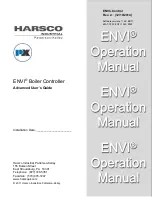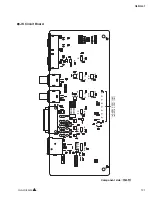
BioMax2 / KBio2-Online
Installation and Programming Manual
Page
17 of 91
5.2. Connection to a configurable RS-232 reader
Kimaldi Electronics offers a series of readers (for example, KRD13M and SC42) that
have automatic operating modes and that also allow for two-way communications
between the Host and the reader (normally for configuration tasks).
BioMax2
and
KBio2-Online
are capable of capturing the events generated by these
readers and applying them with the same treatment as if they came from a Clock&Data
reader: automatic buzzer activation and LEDs and multiread filtering, etc.. These
readings are notified from the
event.
At the same time, two-way communications are permitted between the Host and the
reader from the combination of the
command and the
5.3. Finger presence detection
BioMax2
and
KBio2-Online
electronics support two different means of finger presence
detection, depending on the installed hardware:
•
LED optical barrier:
This is the legacy method, the only one available for old FIM
versions (FIM20xx, FIM22xx y FIM30xx). The LED barrier is going to be
obsoleted. Please find more details in
•
Auto-On funcion:
Newer FIM versions (FIM 5360 and later) provide an
Auto-
Identify
function based on an embedded capacitive sensor. This is going to be the
default detection method for
BioMax2
and
KBio2-Online
. Please find more
details in
5.3.1. Optical Barrier
BioMax2
and
KBio2
terminals allow you to control an optical barrier to detect the
presence of a finger on the biometric sensor. In addition to the normal operating
conditions, the optical barrier manages two possible error situations:
1.-
Permanent obstruction of the beam.
In its idle state, the optical barrier detects the
beam of light from the LED emitter. If it does not detect the beam for some time, it
may be due to a mechanical or electronic fault. In normal conditions, 2 or 3 consec-
utive identification attempts can be made, without removing your finger from the
biometric sensor, before this error is triggered. This parameter can be configured, as
explained in the
2.-
Interference by external light sources
. If you expose the terminal to extreme light
conditions, the receptor element can be saturated, so it cannot detect the presence of
a finger.
Both permanently blocking the beam and saturating the receptor trigger an error
situation, in the event of which the Host will receive a notification (event
, code 0xED ). The yellow LED on
KBio2-Online
’s User Interface (“Ready”) will
















































